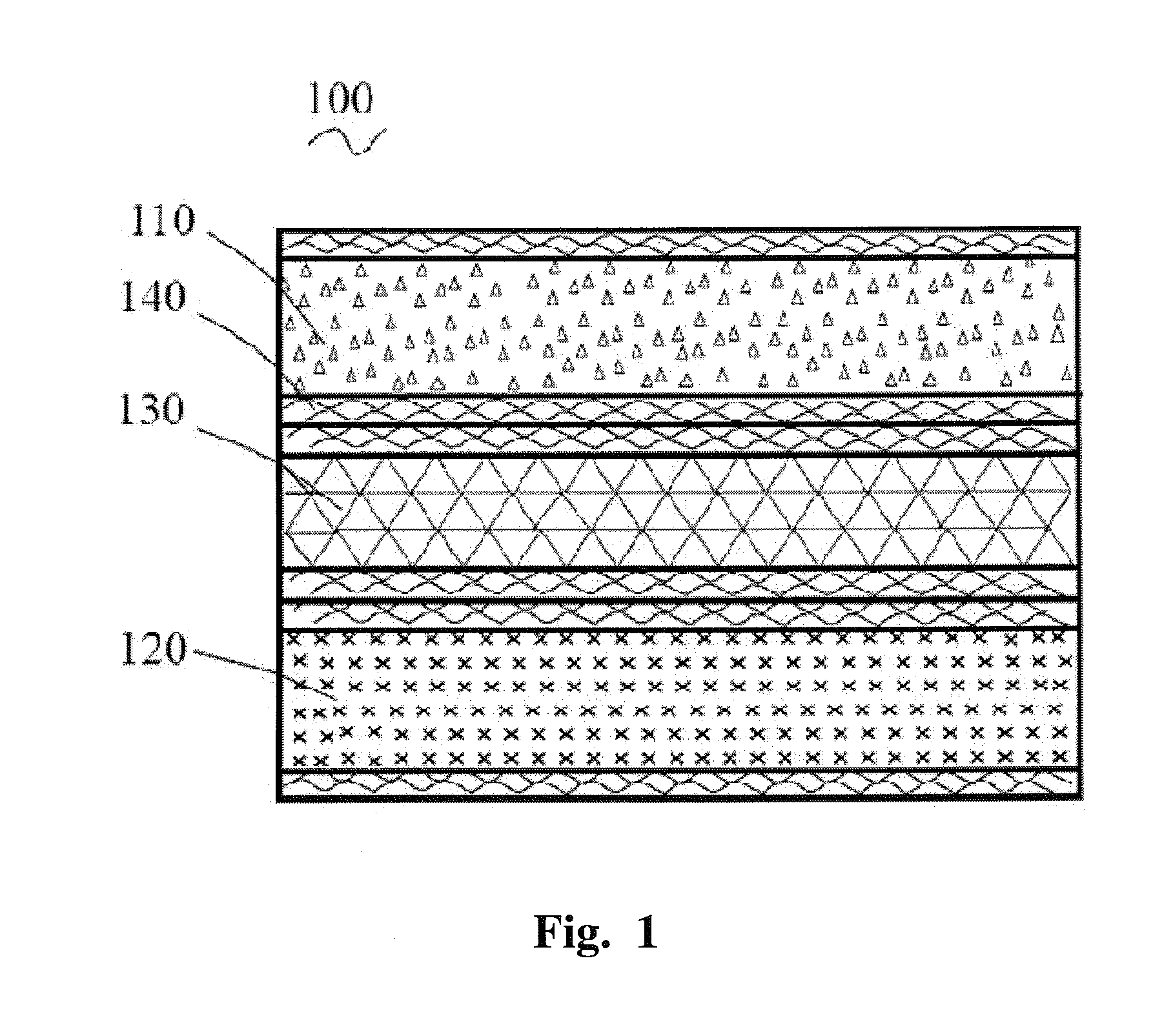Lithium Ion Battery
a technology ion battery, which is applied in the field of lithium ion battery, can solve the problems of limited anti-deformation ability of electrode materials, poor mechanical properties, and easy loss of electrode materials by current collectors, and achieves improved utilization of active materials, improved surface area density and energy density of electrodes, and closer stacking
- Summary
- Abstract
- Description
- Claims
- Application Information
AI Technical Summary
Benefits of technology
Problems solved by technology
Method used
Image
Examples
example 1
The Fabrication of a Lithium Ion Battery
[0038]Step 1. 7 g PVDF binder is added into 180 g NMP solvent and mix them thoroughly to form the glue like solution.
[0039]Step 2. The cathode slurry is prepared by the following process: The 140 g LiFePO4 and 2.8 g Super-P conductive carbon is thoroughly mixed into the above glue like solution, mix them thoroughly in the mixer to form a paste like cathode slurry. Use the foamed aluminum with the porosity of 90% as the current collector. Use a doctor blade to coat the cathode slurry onto the both sides of the foamed Al current collector. Put the electrode slurry coated current collector into 110° C. vacuum oven for 4 hrs to remove NMP solvent and dry it. Press the above dried current collector with a rolling press machine to make the active material packed tighter. The targeted thickness after pressing is determined by the battery design, generally at 500 μm including the current collector imbedded inside the electrode material. Calcine the pr...
PUM
| Property | Measurement | Unit |
|---|---|---|
| porosity | aaaaa | aaaaa |
| viscosity | aaaaa | aaaaa |
| volume change | aaaaa | aaaaa |
Abstract
Description
Claims
Application Information
 Login to View More
Login to View More - R&D
- Intellectual Property
- Life Sciences
- Materials
- Tech Scout
- Unparalleled Data Quality
- Higher Quality Content
- 60% Fewer Hallucinations
Browse by: Latest US Patents, China's latest patents, Technical Efficacy Thesaurus, Application Domain, Technology Topic, Popular Technical Reports.
© 2025 PatSnap. All rights reserved.Legal|Privacy policy|Modern Slavery Act Transparency Statement|Sitemap|About US| Contact US: help@patsnap.com


